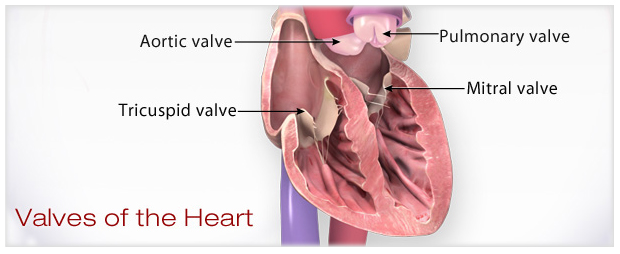Roles of Your Four Heart Valves

To better understand your valve condition and what your health care professional will discuss, it helps to know the role each heart valve plays in healthy blood circulation. Every part of the circulatory system must work together to deliver blood, oxygen and nutrients to all tissues. Watch an animation of the heart valves.
What role does each play in healthy circulation?
The four valves in order of circulation are:
- Tricuspid Valve
- Has three leaflets or cusps.
- Separates the top right chamber (right atrium) from the bottom right chamber (right ventricle).
- Opens to allow blood to flow from the right atrium to the right ventricle.
- Prevents the back flow of blood from the right ventricle to the right atrium.
- Pulmonary Valve (or Pulmonic Valve)
- Has three leaflets.
- Separates the right ventricle from the pulmonary artery.
- Opens to allow blood to be pumped from the right ventricle to the lungs (through the pulmonary artery) where it will receive oxygen.
- Prevents the back flow of blood from the pulmonary artery to the right ventricle.
Watch a heart valve anatomy animation.

- Mitral Valve
- Has two leaflets.
- Separates the top left chamber (left atrium) from the bottom left chamber (left ventricle).
- Opens to allow blood to flow from the left atrium to the left ventricle.
- Prevents the back flow of blood from the left ventricle to the left atrium.
- Aortic Valve
- Has three leaflets, unless it's abnormal from birth, i.e., bicuspid aortic valve.
- Separates the left ventricle from the aorta.
- Opens to allow blood to leave the heart from the left ventricle through the aorta and the body.
- Prevents the backflow of blood from the aorta to the left ventricle.
Essentials for properly working valves
- The valve is properly formed and flexible.
- The valve should open all the way so the blood can pass through.
- The valve should close tightly so no blood leaks backwards into the chamber.





